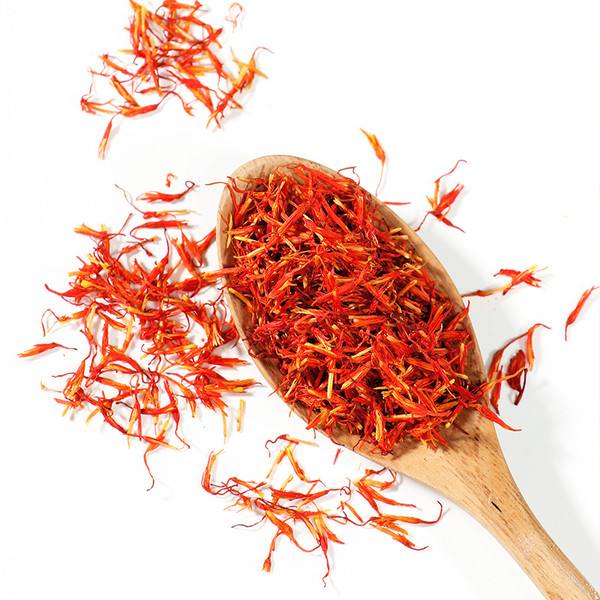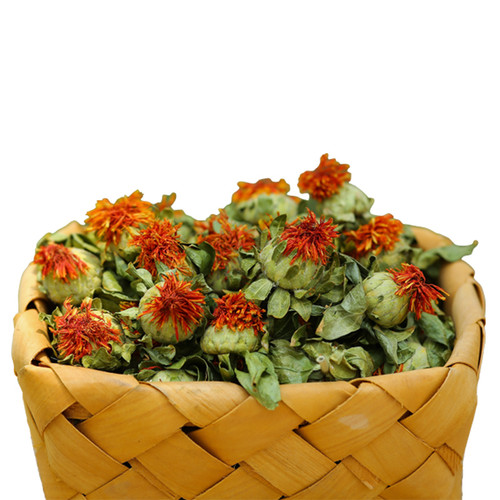Product Overview
Parts used: Dried stigma
TCM category: Herbs that invigorate the Blood
TCM nature: Neutral
TCM taste(s): Sweet
Meridian affinity: Heart Liver
Scientific name: Crocus sativus
Other names: Autumn crocus
Use of saffron (Xi Hong Hua) in TCM
Please note that you should never self-prescribe TCM ingredients. A TCM ingredient is almost never eaten on its own but as part of a formula containing several ingredients that act together. Please consult a professional TCM practitionner, they will be best able to guide you.
Preparation: When the flowers bloom, take off the stigma and dry it.
Dosage: 1 - 3g
Main actions according to TCM*: Activates Blood circulation and eliminates Blood stasis. Cools the Blood and detoxifies. Calms the mind.
Primary conditions or symptoms for which saffron may be prescribed by TCM doctors*: Amenorrhea Depression Palpitations Postpartum hemorrhoids Erectile dysfunction Irregular menstruation Dysmenorrhea
Contraindications*: Use with caution during pregnancy
Key TCM concepts behind saffron (Xi Hong Hua)'s properties
In Traditional Chinese Medicine (TCM), saffron are plants that belong to the 'Herbs that invigorate the Blood' category. Like the name indicates these herbs tend to stimulate the Blood flow. In TCM they're used to help the circulation of Blood in cardiovascular conditions or menstrual irregularities as well as to treat acute pains caused by Blood Stagnation. They can also be used to treat Blood Stasis in the case of certain tumors, cysts and hardened clots.
Furthermore saffron are plants that are Neutral in nature. This means that saffron typically don't affect the balance in your body. Balance between Yin and Yang is a key health concept in TCM. Eating too many "Hot" (Yang) ingredients can lead to an imbalance whereby one has a Yang excess. The inverse is true as well: too many "Cold" (Yin) ingredients can lead to a Yin excess. The Neutral nature of saffron means that you don't have to worry about that!
Saffron also taste Sweet. The so-called "five elements" theory in Chinese Medicine states that the taste of TCM ingredients is a key determinant of their action in the body. Sweet ingredients like saffron tend to slow down acute reactions and detoxify the body. They also have a tonic effect because they replenish Qi and Blood.
The tastes of ingredients in TCM also determine what organs and meridians they target. As such saffron are thought to target the Heart and the Liver. In addition to regulating blood flow, in TCM the Heart is believed to be the store of the "spirit" which basically refers to someone's vitality. The Liver on the other hand is often referred as the body's "general" because it is in charge of regulating the movements of Qi and body fluids. It also takes a leading role in balancing our emotions.
Use of saffron (Xi Hong Hua) as food
Saffron are also eaten as food. It is used as an ingredient in dishes such as Moroccan Saffron Chicken or Paella.









